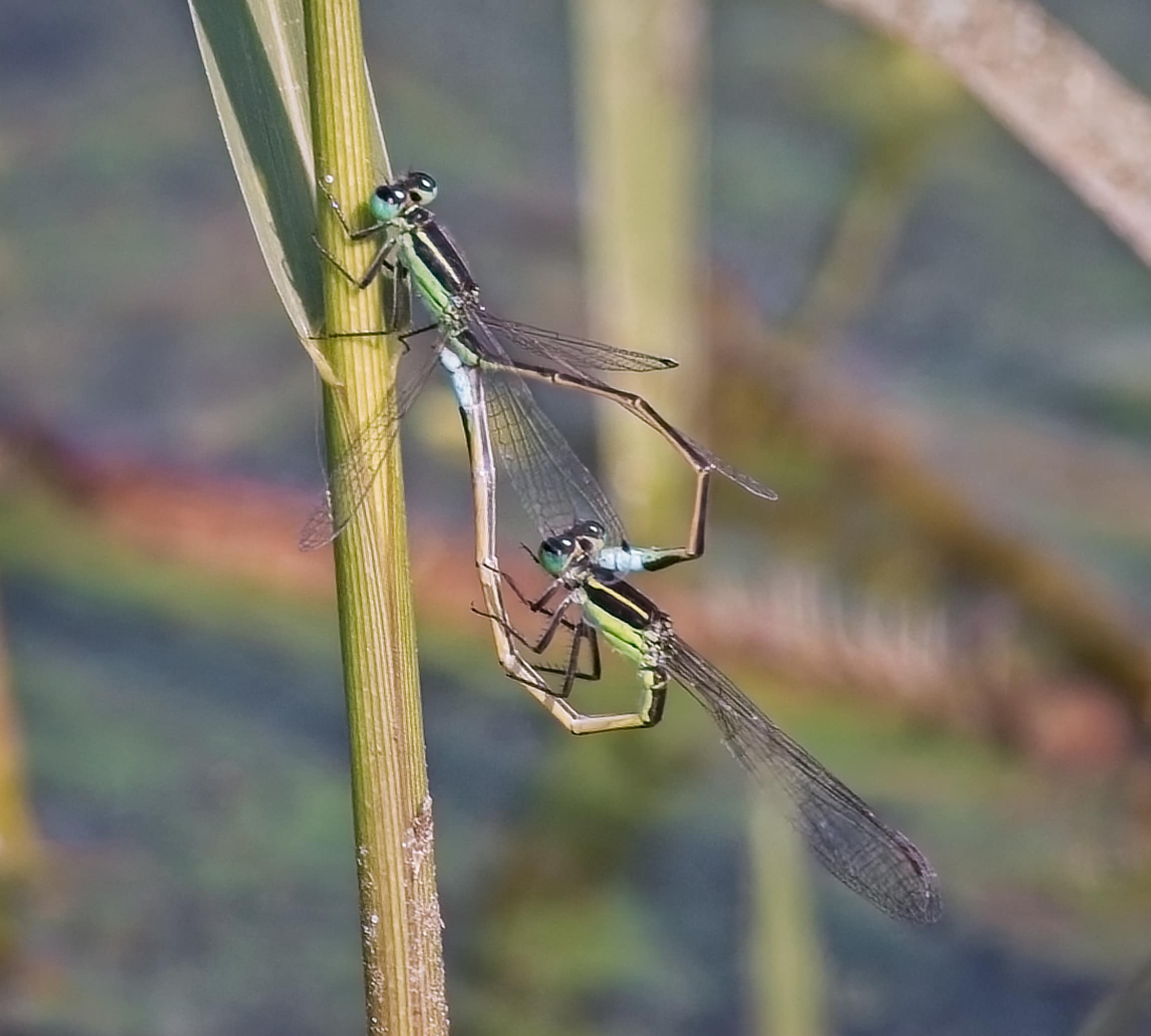Summers are not complete without watching the aerial acrobatics of dragonflies as they chase down their prey on the wing. And it is always satisfying when their prey includes pesky yellow flies that we all detest. But alas, dragonflies are but one of two major groups in this ancient order of insects – the Odonata – the tooth ones. Damselflies are smaller and appear to be dainty, but are voracious predators, nonetheless.
As a group, Odonates are one of the oldest known groups of insects, appearing over 200 million years ago, and fall into two major subgroups. The larger dragonflies belong to the Anisoptera (uneven wings). The much smaller damselflies belong to the Zygoptera (even wings). Aside from size, damselflies have slimmer bodies and hold their wings folded together above their body when at rest. Dragonflies hold their wings out flat.
Although smaller and not the strongest of flyers, damselflies are nevertheless important elements of the habitats they inhabit. As with dragonflies, their young (nymphs) are aquatic in ponds, lakes, and streams where they spend upwards of a year before emerging to mate and perpetuate the next generation. Nymphs of both groups are also predators. Once they transition to adults, they feed on small flying or perched prey but are much less conspicuous than their larger dragonfly relatives.
That is unless you spot a flying or perched pair linked together in a heart-shaped configuration during mating. Upon finding a suitable mate, the male grabs his mate behind the head with its pair of claspers located at the tip of its abdomen. For her part, the female then twists her abdomen downwards and forward to the genitals of the male to collect a packet of sperm that she will use once she starts to lay her eggs.

And although it appears the male is in control, it really is the female orchestrating the actions, as she directs her mate (often still clinging to her) to a suitable place to deposit her eggs. Eggs are fertilized as they exit her body, from the stored packet of sperm. Females may land on an emerged aquatic leaf and lay eggs below the surface or fly just above the water dropping or dabbing her abdomen to release her eggs. At least in part, the male remains attached to prevent other males from mating with her.
But do not feel sorry for the daintier ways of damselflies. They may be smaller and slower, but they are predators of many small insects. They are also prey for other insects, like Robber Flies, or end up in the webs of spiders. All are part of the food chain. In the case of damselflies and dragonflies, they play those parts in both aquatic and aerial parts of our landscape.
It takes more effort to find them loafing on vegetation or flying close to the ground and out of the wind, but damselflies can be every bit as interesting to watch. Their colors are as dramatic as their cousins. Look for them along the edges of wet areas.
Hope to see you in our great outdoors!
Photos courtesy of Sharon Milligan.